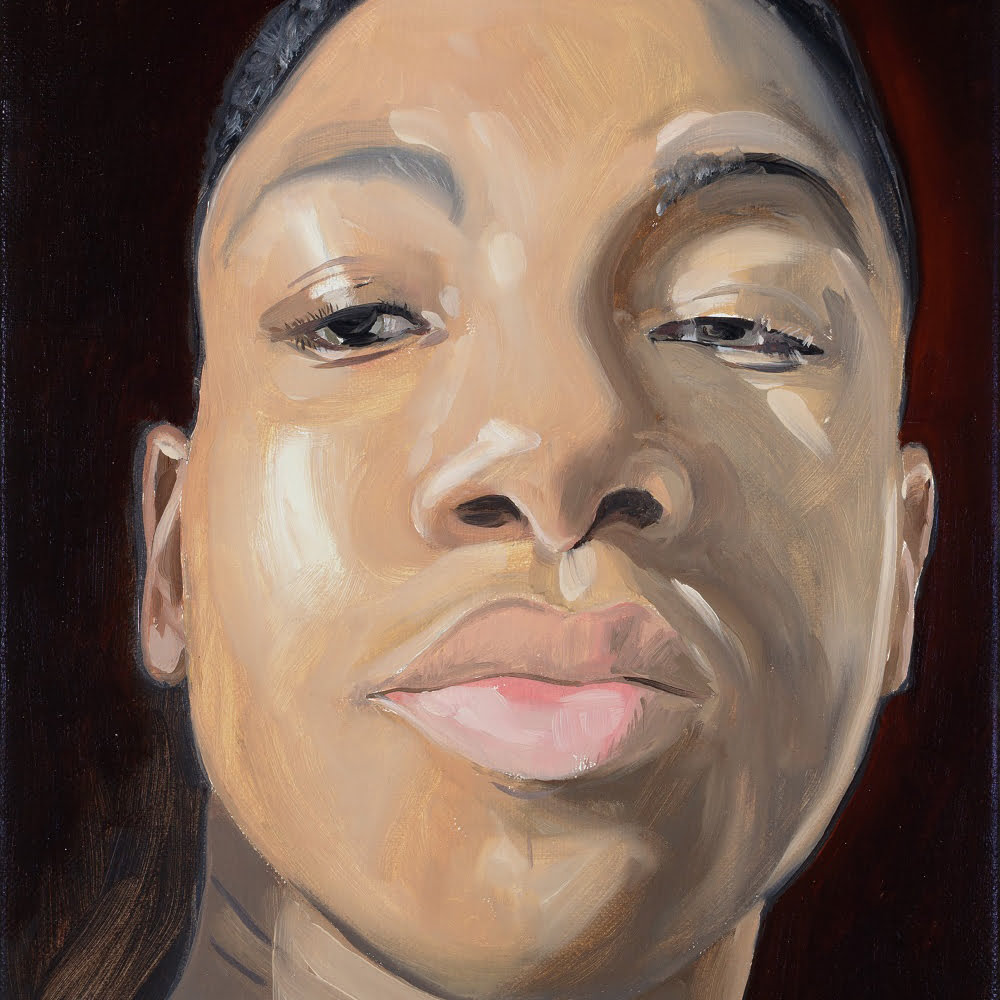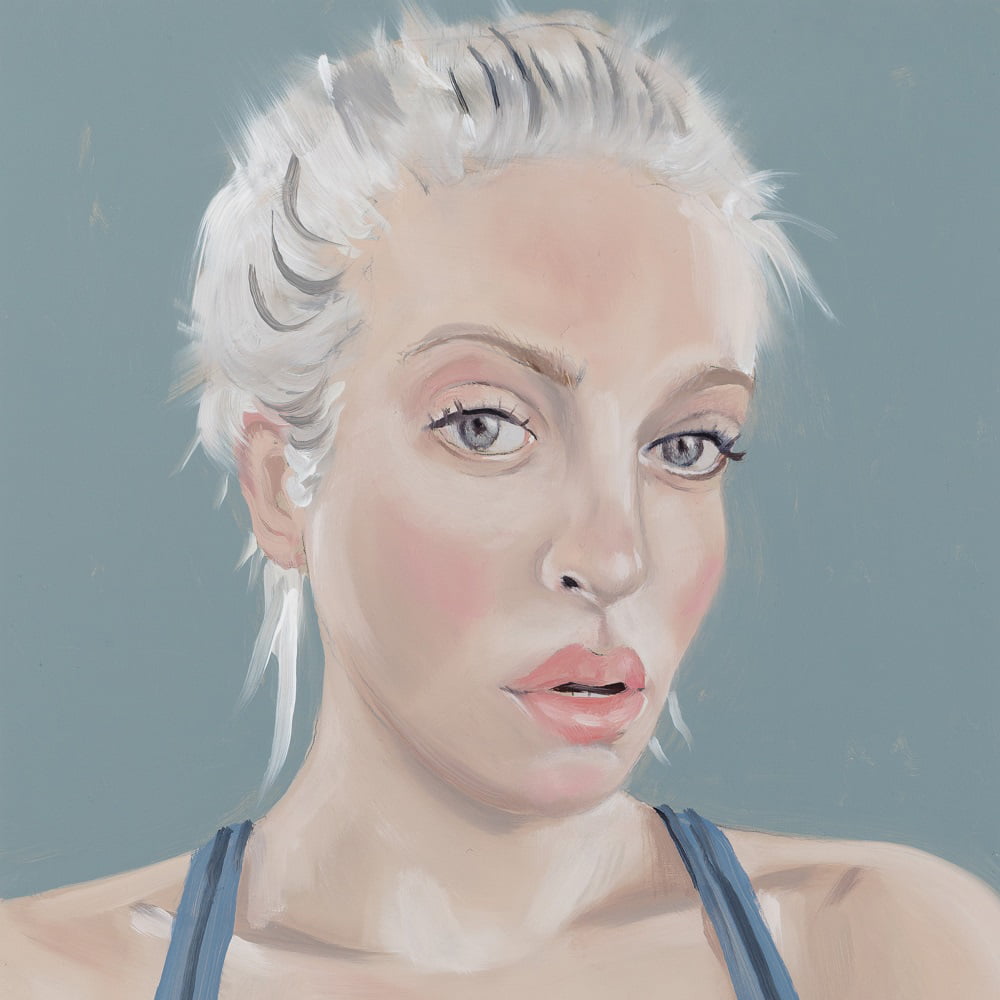Leaning In to Reveal the Personal and the Imagined
On View through May 30 at the Boca Raton Museum of Art
The Museum premiere of these new paintings by Paul Gervais features portraits with a tenderness that urges the viewer to lean in closely, to really study them. All of the subjects in the portraits are personal, from the life he has shared for 46 years with his husband Gil, of whom there are several paintings. The exhibition is curated by Kathleen Goncharov, the Senior Curator of the Boca Raton Museum of Art. She chose to accompany the 14 portraits with a series of 13 paintings by Gervais of imagined objects. The exhibition is on view through May 30, and features an exclusive online conversation with Paul Gervais as part of the Museum’s Collectors Forum Series for Members. This virtual visit to the artist’s studio will also be made available free to the public later on, as part of the #BocaMuseumatHome series sponsored by Art Bridges Foundation and PNC.
“Whether real or imagined, all the paintings in this exhibition are a reflection of Gervais’s life and perceptions,” says Irvin Lippman, the Executive Director of the Boca Raton Museum of Art. “The intimate scale of these works forces the viewer to move in closer in order to see each painting’s fine details, and in the case of the portraits – to more closely read each subject’s personality,” adds Lippman.
Always Seeking the True Likeness
The artist was driven to explore portraiture for the first time by two events in early 2020 that left an indelible mark on Paul Gervais: after he saw the exhibition Lucian Freud: Self-Portraits at London’s Royal Academy of Arts; and after reading The Lives of Lucian Freud by William Feaver. “All of a sudden one day at home I came down to breakfast and there was my husband Gil, and it all clicked: in a flash I took his photo and rushed to my studio to paint my very first portrait,” says Gervais. The intimate, smaller scale of these paintings was inspired by Freud’s smaller works, especially Freud’s petite portrait of Queen Elizabeth. “To me, when I observe Lucian Freud’s body of work, his portraits come across as a kind of autobiography. When viewing them I feel as though I could fill in the blanks of his life, and the history of art in that place in time.”
Also an acclaimed author, his first novel was a finalist for the prestigious PEN/Faulkner Award for Fiction in 1991. Presciently, the title of Gervais’s first book was Extraordinary People, foreshadowing his focus today on painting people who are extraordinary because they stand out in his life. “When I’m painting a portrait, I’m thinking about that person all the time. A true likeness is what I am looking for most of all,” says Gervais, who always paints his subjects from a photograph. “I prefer to catch them while they are in a reflective moment,” he says. “I don’t usually want them looking at the camera. I prefer they never pose nor aim to please, to show a more intimate look at the person.”
“The Abstracts are also a Portrayal of Something that is Me”
Although the forms referred to in the title of the exhibition are imaginary, they reflect Gervais’s sensibility and experience, and are closely linked to his portraits. Gervais refers to these forms and figures as “all-time, from throughout all cultures of human history.” These abstractions have personal relevance for Gervais, such as Sculpture and a Pool – an homage to David Hockney, who Gervais met when he was a student at the San Francisco Art Institute in the 1970s, when Hockney was a guest lecturer. Hockney became friends with Paul and Gil. He pictured the couple in one of his Composite Polaroid works during that period, and they have remained friends ever since.
“The abstracts are also very much a portrayal of something that is me,” says Gervais. Some are imagined interiors, such as the hybrid style of Enfilade, a cross between a minimalist home and a contemporary art gallery. In some of these interiors, Gervais includes depictions of paintings behind the forms as nods to iconic abstract expressionist works. In some of his other abstracts, Gervais projects tones inspired by 18th-century neo-classical colors. Others show forms with oxidized copper hues that give heed to the Statue of Liberty, with a horizon line of pale blue sky.
More About the Artist
The work of Paul Gervais is in the collections of several institutions, including: the Museum of the Legion of Honor in San Francisco; the Bank of America Collection; the San Francisco Museum of Modern Art; and the Hall Collection in New York. In 1980, he earned his MFA from the San Francisco Art Institute. Gervais also earned a B.A. in English Literature at Saint Michael’s College in Vermont in 1969. At San Francisco State University, Gervais studied poetry with Robert Creeley and Phillip Lamantia.
His work has been exhibited in solo and group exhibitions throughout the U.S. and Europe, including: The Achenbach Foundation for Graphic Arts/The Museum of the Legion of Honor; Sunne Savage Gallery (Boston); Leah Levy Gallery (San Francisco); Fritz Gallery (Palm Beach); Bagni di Lucca Art Festival (Italy); and Gavlak Gallery (Palm Beach).
In addition to his literary success with the PEN/Faulkner Award Finalist nomination, other short fiction and articles by Gervais have been published in anthologies and periodicals including The Los Angeles Times. “My lifelong devotion to art, both visual art and writing, are my two passions. I believe that both art and writing come from the same place in the artist. They are just different disciplines,” says Paul Gervais.
Gervais met Gil Cohen in 1974, and the artist credits their shared life of more than four decades as being instrumental in his art. They now live in London and Palm Beach County. In 1982, the couple became internationally famous for the garden at their celebrated home in Lucca, Italy where they lived for 34 years before moving to London in 2016. The 60-acre estate, Villa Massei, was built in 1500 by the Counts Sinibaldi. Hundreds of garden lovers and botanical clubs visited their garden. It captured the attention of Prince Charles, who invited Paul and Gil to his Highgrove Royal Gardens. Many notables visited the garden and stayed at the villa, including: David Hockney; the Queen of Norway; Princess Maria Pia of Bourbon-Parma (the daughter of Italy’s last king); Hubert de Givenchy; James Lord; Edmund White; Kathleen Turner; and Michelle Phillips, among others. His book, A Garden in Lucca, is a personal memoir recalling the author’s journey of self-discovery after caring for the extensive garden.
Regarding this new pairing of his portraits alongside the paintings of imagined forms, Gervais states: “I am thrilled the Museum is showing them together, because they are linked. Faces and Forms takes a closer look at figuration in art. The abstract forms are positioned like actors on a stage, interacting with light and shadow and with each other. This show could be seen as people in my portraits contemplating the mysteries of abstraction, their faces surrounded by their inner artistic conundrums. Also, could this pairing be seen as an affirmation that all painting is simply portraiture, whatever the subject. This brings to mind a quote by Jamie Wyeth: Everything I paint is a portrait, whatever the subject.”
About the Boca Raton Museum of Art
Kicking off its eighth decade in 2021, the Boca Raton Museum of Art encompasses a creative campus that includes the Museum in Mizner Park and the Art School. As one of South Florida’s cultural landmarks, the Museum has provided cultural and artistic service to the community, and to many visitors from around the world, since it was founded by artists in 1950. Visit their website to enjoy the Museum’s current online content, including video tours and digital gallery guides. Support for #BocaMuseumatHome and #KeepKidsSmartwithArt virtual programming is provided by Art Bridges Foundation and PNC. Museum hours, admission prices and more visitor information available at the museum’s website.










